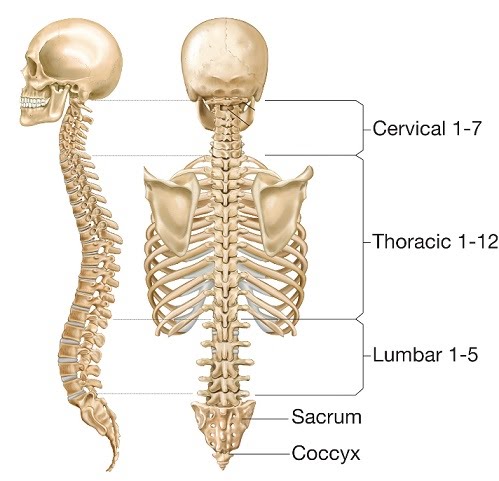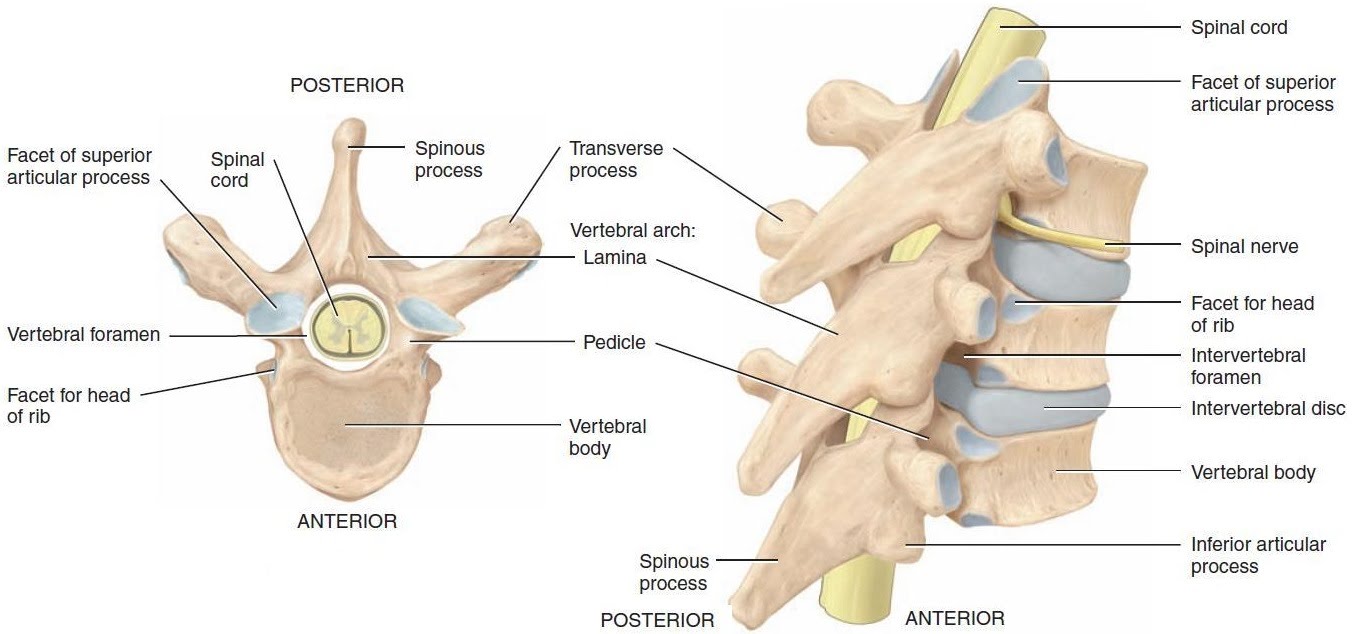Vertebral column
The spine has two inward curvatures
The difference between vertebrates
Cervical, thoracic and lumbar
deformities of the spine
Scoliosis
Treatment
Vertebral column
The vertebral column is what classifies all vertebrates as such, and acts to support the skeleton as part of the axial skeleton further including the rib cage and the skull. It protects the spinal cord contained within, which is one part of the central nervous system, carrying nerves to the whole body.
As the name suggests, the column is composed of 33 vertebrae (in humans), which are the individual bones that line the column from top to bottom. The top 24 vertebrae are spaced by intervertebral discs made of fibrous cartilage, while the bottom 9 are fused e.g. the tailbone.

Furthermore, the vertebral column is split into multiple sections: cervical (vertebrae C1-C7), thoracic (vertebrae T1-T12), lumbar (vertebrae L1-L5), the sacrum and coccyx.
The spine has two inward curvatures
The spine has two inward curvatures (lordotic curves) and two outward curvatures (kypothic curves). The inward ones are at the neck and lower back (cervical and lumbar curves) while the outward ones are the thoracic and sacral curves.
The differences between vertebrates

The differences in the vertebrae at the different locations on the column are related to their functions. Not all vertebrae are the same size and shape. Each vertebra has a vertebral foramen where the spinal cord passes through, a vertebral body which forms the
